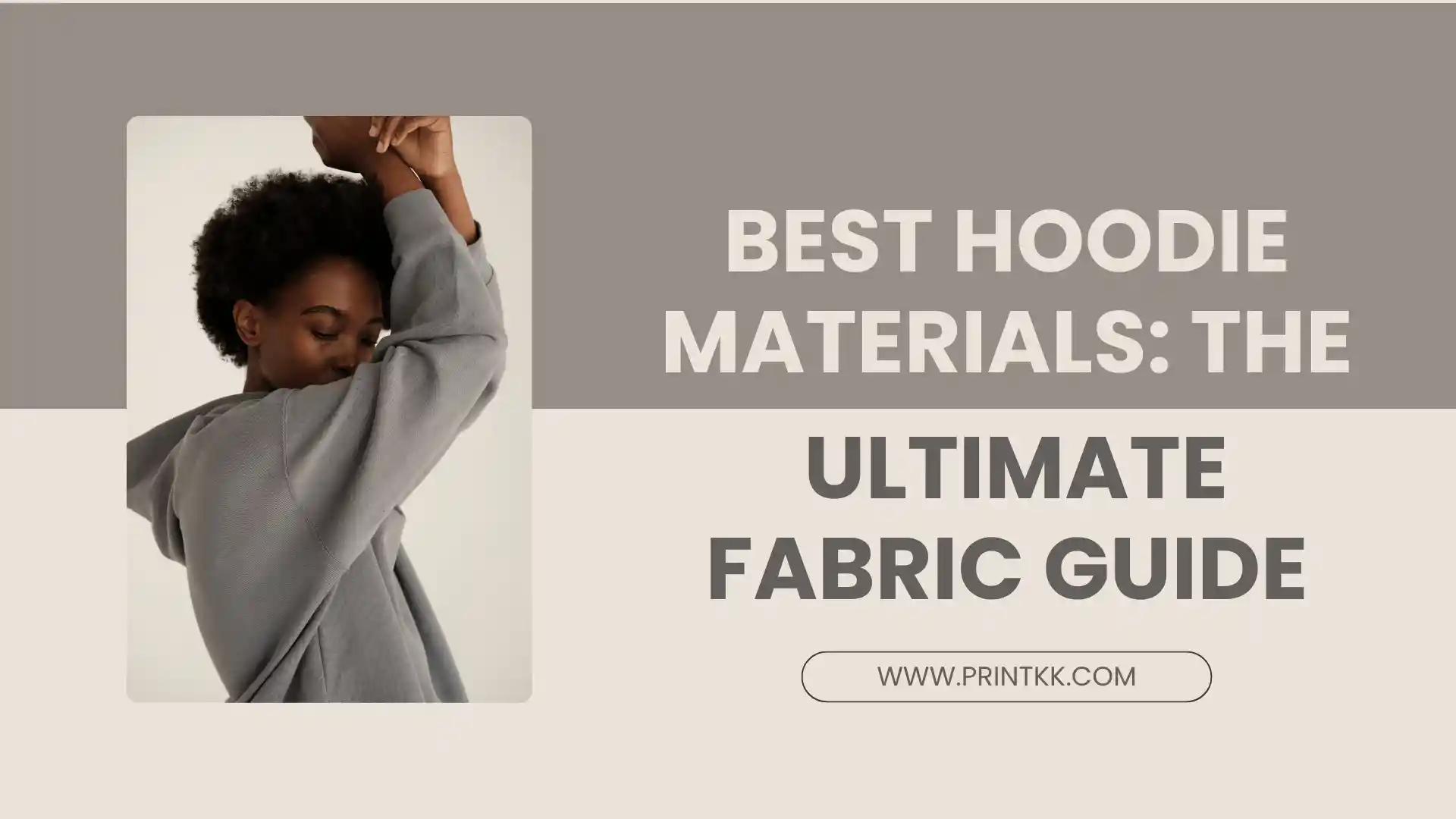
A great hoodie starts with the right fabric. From soft and cozy to durable and breathable, different materials offer different benefits.
Whether you're shopping or creating your own, understanding fabric options is essential for a hoodie you'll love to wear.
Explore Best Hoodie Materials
Cotton
Cotton is a classic choice for hoodies thanks to its natural softness and breathable feel. It's gentle on your skin and keeps you comfortable in mild weather.
If you're after an everyday hoodie that feels light and cozy, cotton works well for lounging, layering, or light activity.
Just keep in mind, it may shrink a bit after washing.
Cotton-Polyester Blend
Blending cotton with polyester brings the best of both worlds: softness and strength.
A 60/40 mix gives a natural touch with better durability, while a 50/50 blend is more wrinkle-resistant and faster to dry.
These blends are perfect for active lifestyles or branded hoodies that need to hold up over time without losing shape or color.
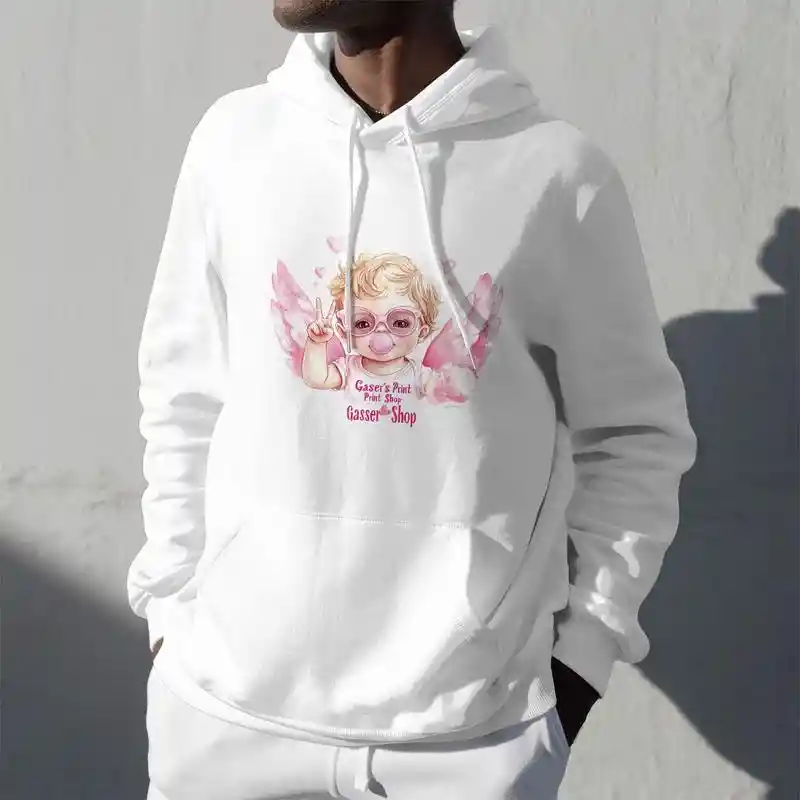
French Terry
French terry offers a smooth outside and looped inner surface that gives it a lightweight, breathable texture.
It's ideal for in-between seasons or gym wear where you need flexibility and airflow.
If you're looking for a hoodie that's comfy without being too warm, French terry delivers a relaxed, move-friendly fit.
Fleece
Fleece is all about warmth. Made from brushed polyester or blends, it traps heat and feels soft against the skin. It's a go-to for cold days or cozy nights in.
You'll find fleece hoodies in winter collections, loungewear, and travel gear because they're warm yet lightweight. They're not as breathable, so best worn in chillier weather.

Custom Unisex Crewneck Sweatshirt (Made in USA) Customized Services - Print-On-Demand - PrintKK
Wool Blend
A wool blend combines wool with fibers like cotton or synthetic yarns to make the fabric softer and easier to wear. These hoodies hold warmth well and have a premium, slightly rugged feel.
Ideal for chilly climates or elevated casual style, wool blends offer insulation without being overly bulky, though care instructions may vary.
Spandex (Lycra)
Spandex isn't used alone in hoodies, but when blended into fabrics, it adds stretch and comfort. You'll usually find 3–5% spandex in activewear or slim-fit hoodies.
This makes the fabric flexible and great for movement. If you prefer a hoodie that stretches with you, this small addition makes a noticeable difference.
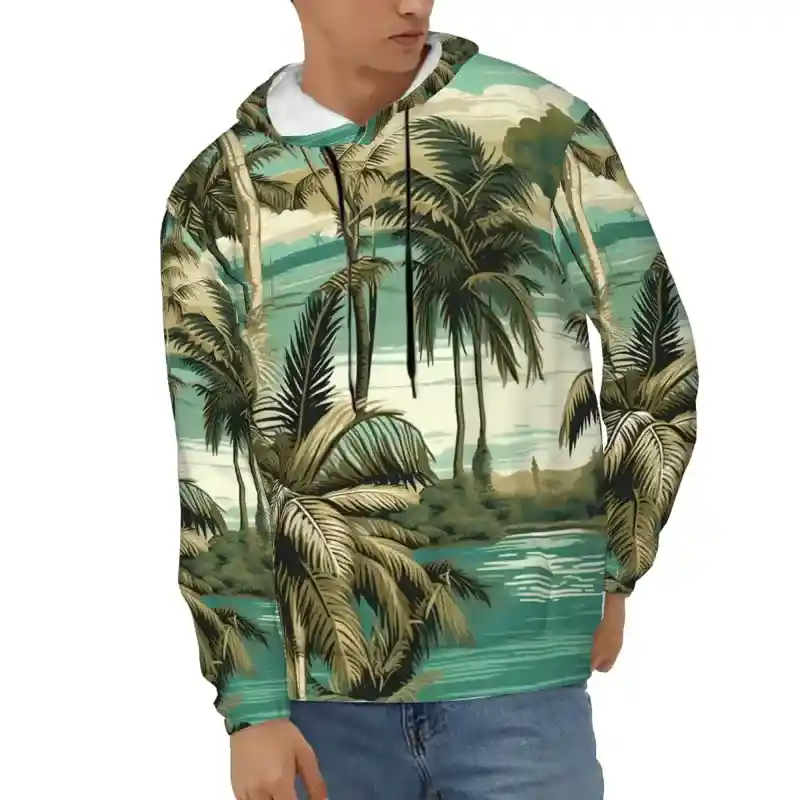
Custom Mens Hoodie with Pockets Customized Services - Print on Demand Fulfillment - PrintKK
Bamboo Fabric
Bamboo fabric feels ultra-smooth and naturally helps manage moisture. It's also antibacterial and great for sensitive skin.
Bamboo hoodies are a smart choice if you care about eco-friendly materials and temperature balance, as they feel cool in summer and warm in cooler air. They also resist odor better than many other fabrics.
Polyester
Polyester is durable, quick to dry, and holds its shape over time. It's commonly used in performance hoodies or outerwear where sweat-wicking and colorfastness matter.
If you're often on the go or outdoors, polyester offers a reliable, low-maintenance choice that keeps up with your day. It pairs well with prints and logos too.
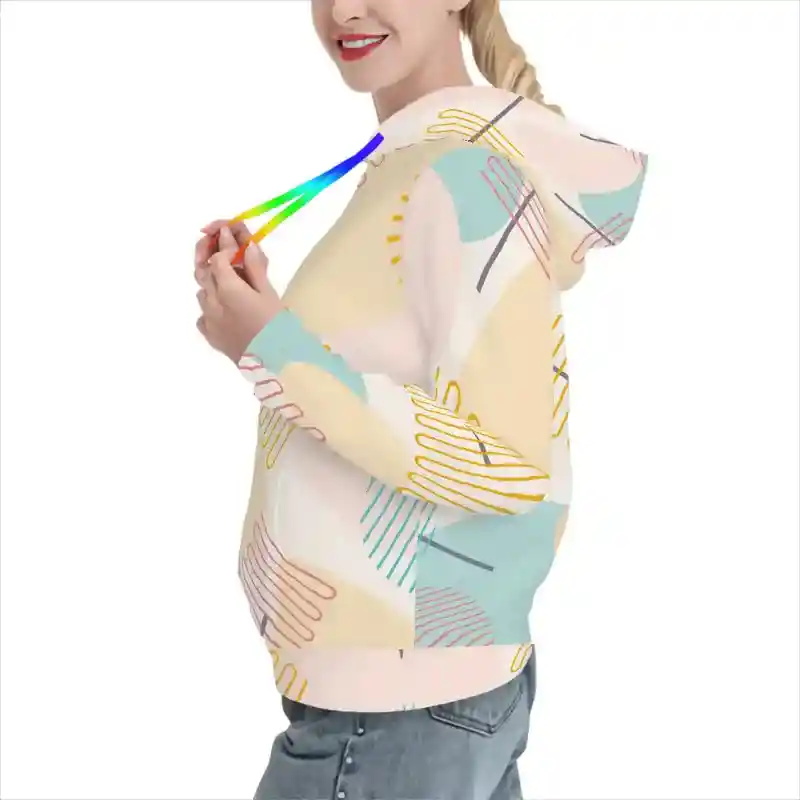
Custom Printed on Demand Hoodies for Women Customized Services (AOP) - PrintKK
Sherpa
Sherpa adds plush comfort, typically as a lining inside hoodies. It mimics the feel of real wool and creates a warm, insulated interior.
You'll find sherpa-lined hoodies in cold-weather collections or casual pieces made for comfort, especially when you want to stay warm without layering heavy coats.
Hemp
Hemp fabric is strong, sustainable, and naturally breathable. Though it starts out stiff, it softens over time. It's a solid pick for eco-conscious wearers or anyone looking for something different.
Hemp hoodies have a durable, earthy look and offer good airflow, making them suitable for outdoor wear or long-term use.
Read More:
Most Used Hoodie Fabric Weights and Their Uses
Lightweight Hoodie Fabrics (200-250 gsm)
When you're looking for a hoodie that's easy to wear in warm weather or during active moments, lightweight fabrics are a top choice.
They typically weigh between 200-250 grams per square meter (gsm), making them thin and breathable. You'll find them perfect for summer days, workouts, or layering under jackets because they won't make you overheat.
They dry quickly and feel soft against your skin, but they might not hold up as well in rough conditions.
Medium Weight Hoodie Fabrics (250-350 gsm)
For hoodies that work year-round in most climates, medium weight fabrics are the most popular option.
At 250-350 gsm, they strike a balance between warmth and flexibility. You can rely on them for everyday wear like running errands, relaxing at home, or light outdoor activities.
Many people choose this weight because it adapts well to changing seasons—layer it in cooler months or wear it alone on mild days.
It's a versatile pick if you want one hoodie for multiple situations.
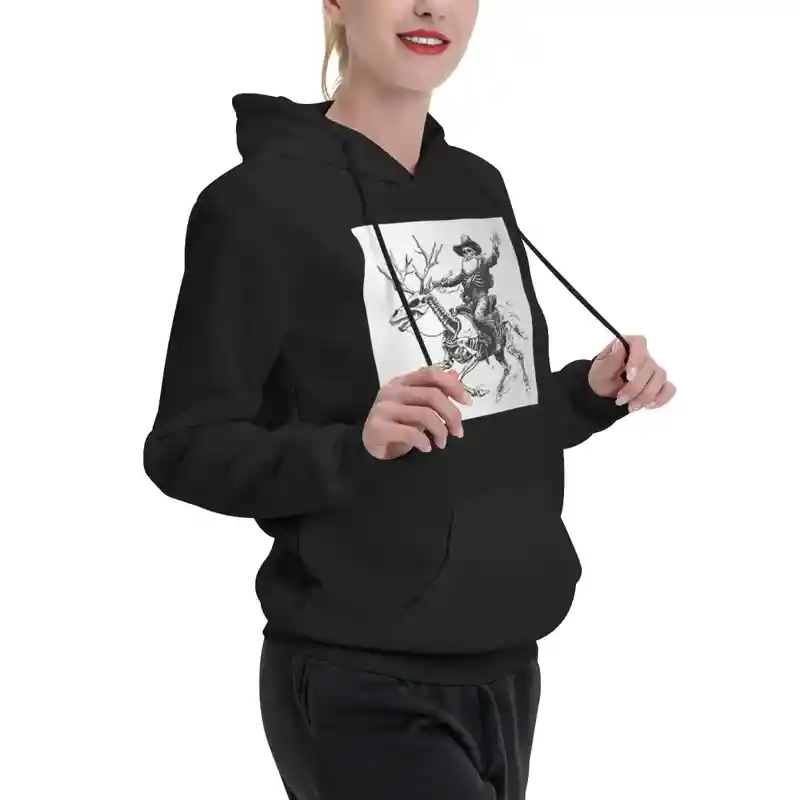
Custom Printed on Demand Couple's Thick Hoodie - Women's Clothing - PrintKK
Heavyweight Hoodie Fabrics (350-450 gsm)
If you live in cold areas or need extra durability, heavyweight hoodie fabrics are your go-to.
Weighing 350-450 gsm, they provide thick insulation and robust protection. You'll appreciate them for winter sports, camping, or daily wear in freezing temperatures because they trap heat effectively and resist wear and tear.
These hoodies feel substantial and cozy, making them ideal for outdoor adventures or when you want long-lasting comfort.
Just keep in mind they can be less breathable, so they're best for chillier settings rather than active sweat sessions.

Custom Adult Blanket Hoodie - Print-On-Demand - PrintKK
Read More:
French Terry Hoodie vs Cotton-Poly Blend Hoodie
When you're choosing between French terry and a cotton-poly blend, it really comes down to how you want your hoodie to feel—and wear—over time.
French terry is all about comfort that grows on you. At first, it might feel a little rough inside. Maybe even too light.
But after a few wears? It softens. It shapes to your body.
The fabric breathes well. You'll find it heavier than it looks, which gives it a nice drape. It doesn't overheat, either. Great for layering or wearing on its own during mild weather.
Cotton-poly blends are more familiar. Softer out of the box. A 65/35 blend might feel cheaper, though—it's light but not always in a good way.
The structure can fall flat, especially around the hood. Go with an 80/20 blend if you want better quality. It gives more body to the hoodie while still being comfy.
Some Cotton-Poly hoodies come with fleece lining. That's great for warmth, but if the fleece is too thick or stiff, the hoodie can feel bulky and uncomfortable. Pay attention to the fabric weight (gsm) — heavier doesn't always mean better.
So which one's better? You want structure and softness over time? French terry. You want easy comfort and wrinkle-resistance? Go for a good cotton-poly blend—with the right balance.

How to Choose the Hoodie Material to Purpose
Start by asking yourself how you plan to wear the hoodie. Is it for casual everyday use, outdoor adventures, or something more heavy-duty like workwear? Your answer will guide you toward the best fabric choice.
For a hoodie meant for daily comfort, pick materials that feel gentle on your skin. Breathable fabrics that aren't too thick work best so the hoodie won't feel bulky or stiff. Cotton blends or French Terry are great options because they combine softness with durability.
If you need something more rugged, like for physical work or outdoor tasks, look for fabrics with a tight weave that can handle rough use.
Heavy cotton or cotton-polyester mixes with limited stretch offer durability and protection against wear.
Think about your local weather too. For colder climates, a fleece-lined hoodie adds warmth. If you're in a warmer area, lighter materials will help you stay cool without sacrificing comfort.
Don't forget any special requirements. Maybe you want quick-drying fabric or something resistant to shrinking. These qualities come from specific fabric blends or treatments, so knowing your priorities will help you decide.
Customize and Sell Quality Hoodies at PrintKK
You can create custom hoodies with PrintKK that fit your style. Add any slogan or image you want. They offer hoodies for women, men, and teens, so everyone's covered. The fabrics, like cotton-poly blends or 100% cotton , feel comfy and last long, perfect for daily wear or gifting.
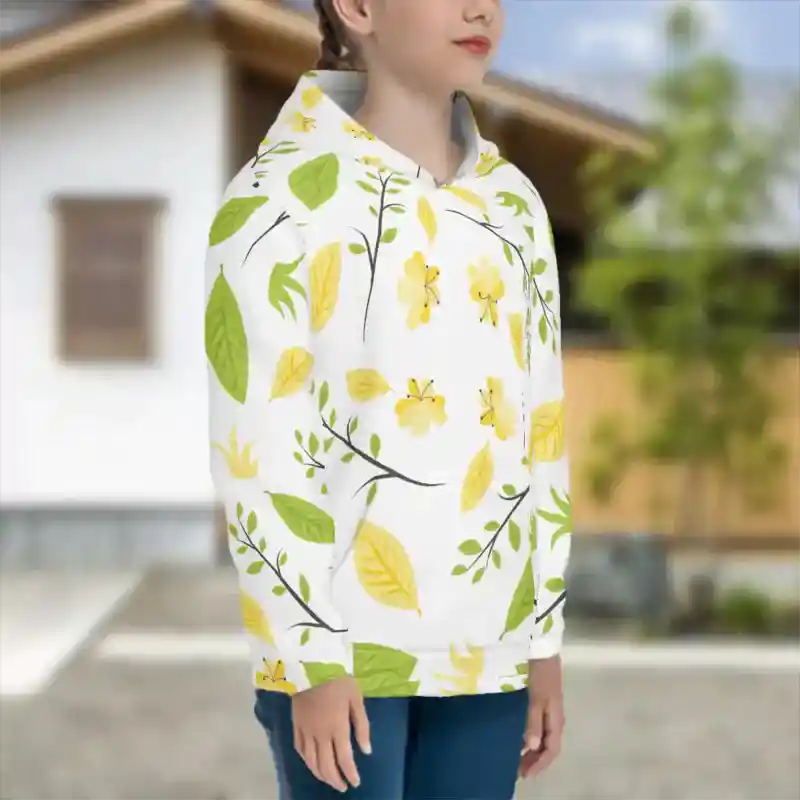
Custom Printed on Demand Youth Hoodies (AOP) - PrintKK
PrintKK's prices are budget-friendly. Whether you're designing one hoodie or ordering many to sell, you won't break the bank. Their platform makes it easy to start, even if you're new to customizing.
With print-on-demand, you design your hoodie online, and it's made only when ordered. This means no extra stock or waste. Upload your design, pick a style, and preview it. You can order a sample to check quality or sell directly to customers with ease.
Expert Tips
Picking the best hoodie material really depends on what feels right for you. Comfort and purpose should guide your choice. Some fabrics offer softness, others bring durability or warmth.
By understanding these qualities, you can find a fabric that suits how you live and what you need. It's all about balance—between feel, fit, and function.
Explore different fabrics to find one that feels right and lasts long. You're ready to choose a hoodie material that works perfectly for you.
FAQs
What is the best fabric for hoodies?
Cotton-poly blends are top choices. They mix cotton's comfort with polyester's durability. You get a soft, long-lasting hoodie perfect for daily wear or casual outings in any season.
What material makes the softest hoodie?
French terry or bamboo fabric feels super soft. After a few wears, they hug your skin gently, making them great for cozy lounging or relaxed days out.
Cotton vs polyester hoodies
Cotton is breathable and soft, ideal for comfort. Polyester is tough and resists wrinkles, great for active use. Blends combine both for a balanced, versatile hoodie you'll love.
Should hoodies be 100% cotton?
Not always. Pure cotton is soft and breathable but may shrink. Blends with polyester add strength and shape retention, making them practical for frequent wear or busy lifestyles.










 Global Shipping
Global Shipping






 Made in USA
Made in USA























